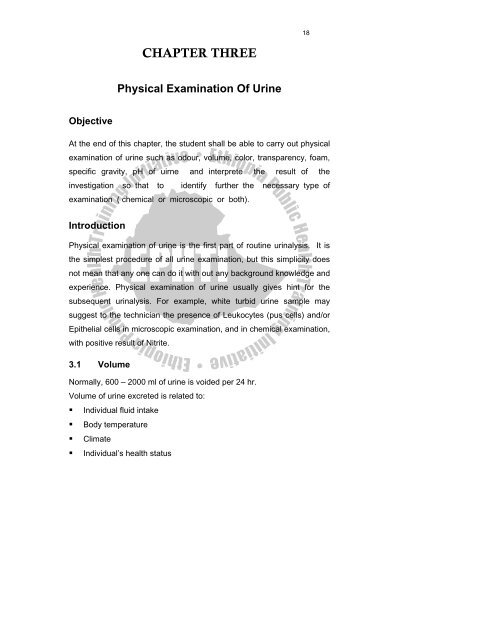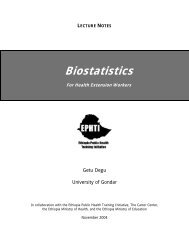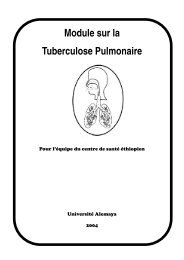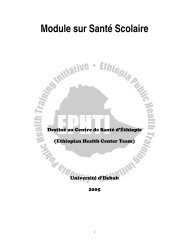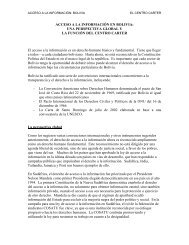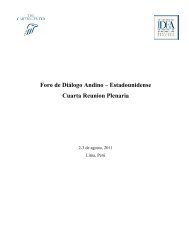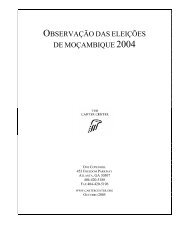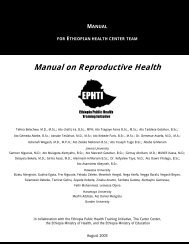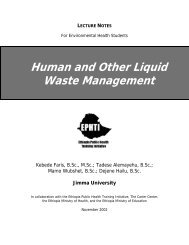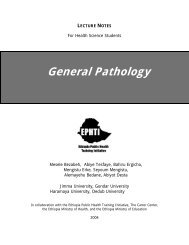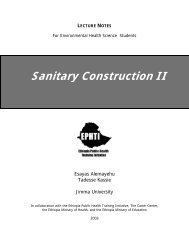Urinalysis - The Carter Center
Urinalysis - The Carter Center
Urinalysis - The Carter Center
You also want an ePaper? Increase the reach of your titles
YUMPU automatically turns print PDFs into web optimized ePapers that Google loves.
18<br />
CHAPTER THREE<br />
Physical Examination Of Urine<br />
Objective<br />
At the end of this chapter, the student shall be able to carry out physical<br />
examination of urine such as odour, volume, color, transparency, foam,<br />
specific gravity, pH of uirne and interprete the result of the<br />
investigation so that to identify further the necessary type of<br />
examination ( chemical or microscopic or both).<br />
Introduction<br />
Physical examination of urine is the first part of routine urinalysis. It is<br />
the simplest procedure of all urine examination, but this simplicity does<br />
not mean that any one can do it with out any background knowledge and<br />
experience. Physical examination of urine usually gives hint for the<br />
subsequent urinalysis. For example, white turbid urine sample may<br />
suggest to the technician the presence of Leukocytes (pus cells) and/or<br />
Epithelial cells in microscopic examination, and in chemical examination,<br />
with positive result of Nitrite.<br />
3.1 Volume<br />
Normally, 600 – 2000 ml of urine is voided per 24 hr.<br />
Volume of urine excreted is related to:<br />
• Individual fluid intake<br />
• Body temperature<br />
• Climate<br />
• Individual’s health status


